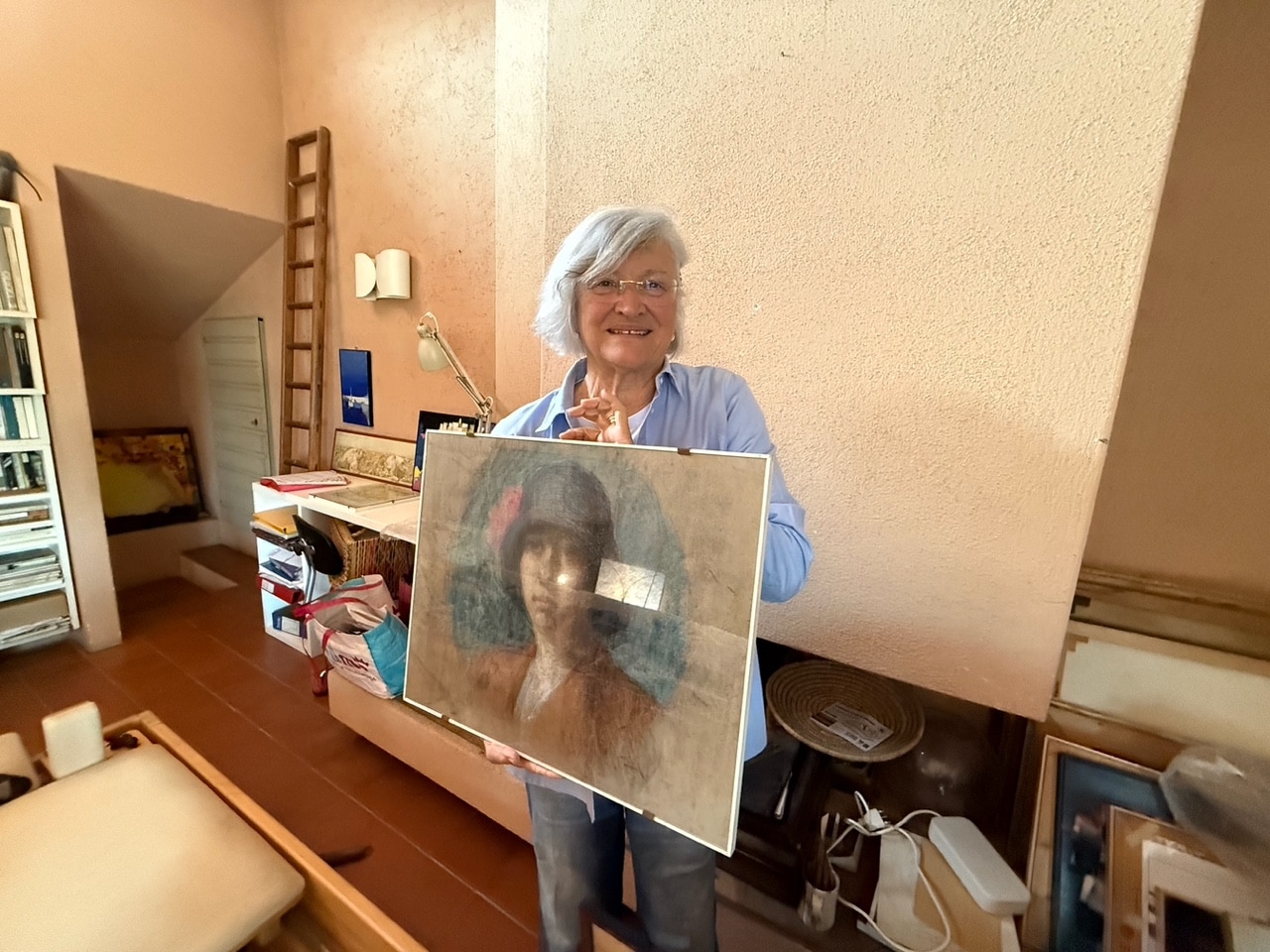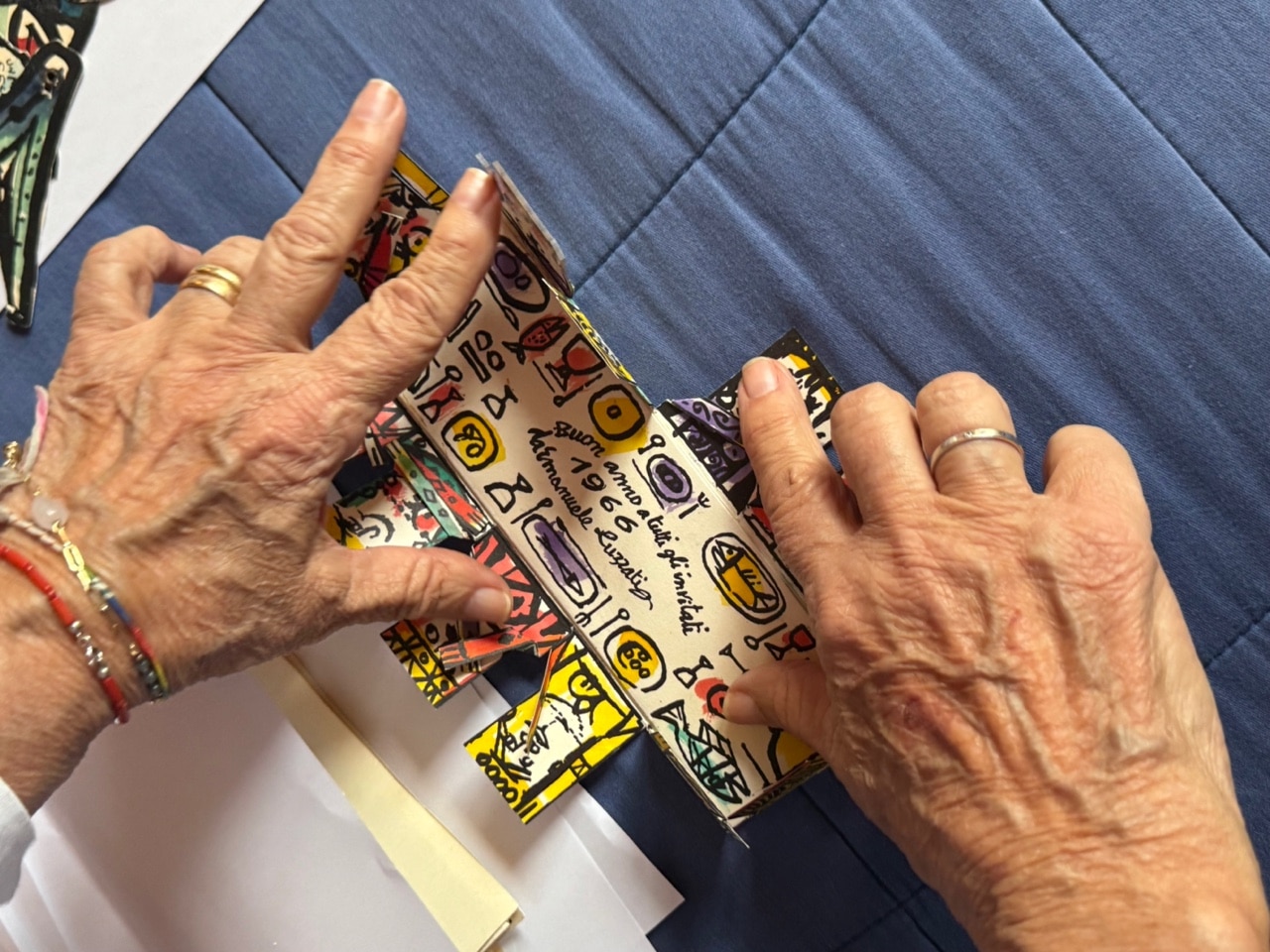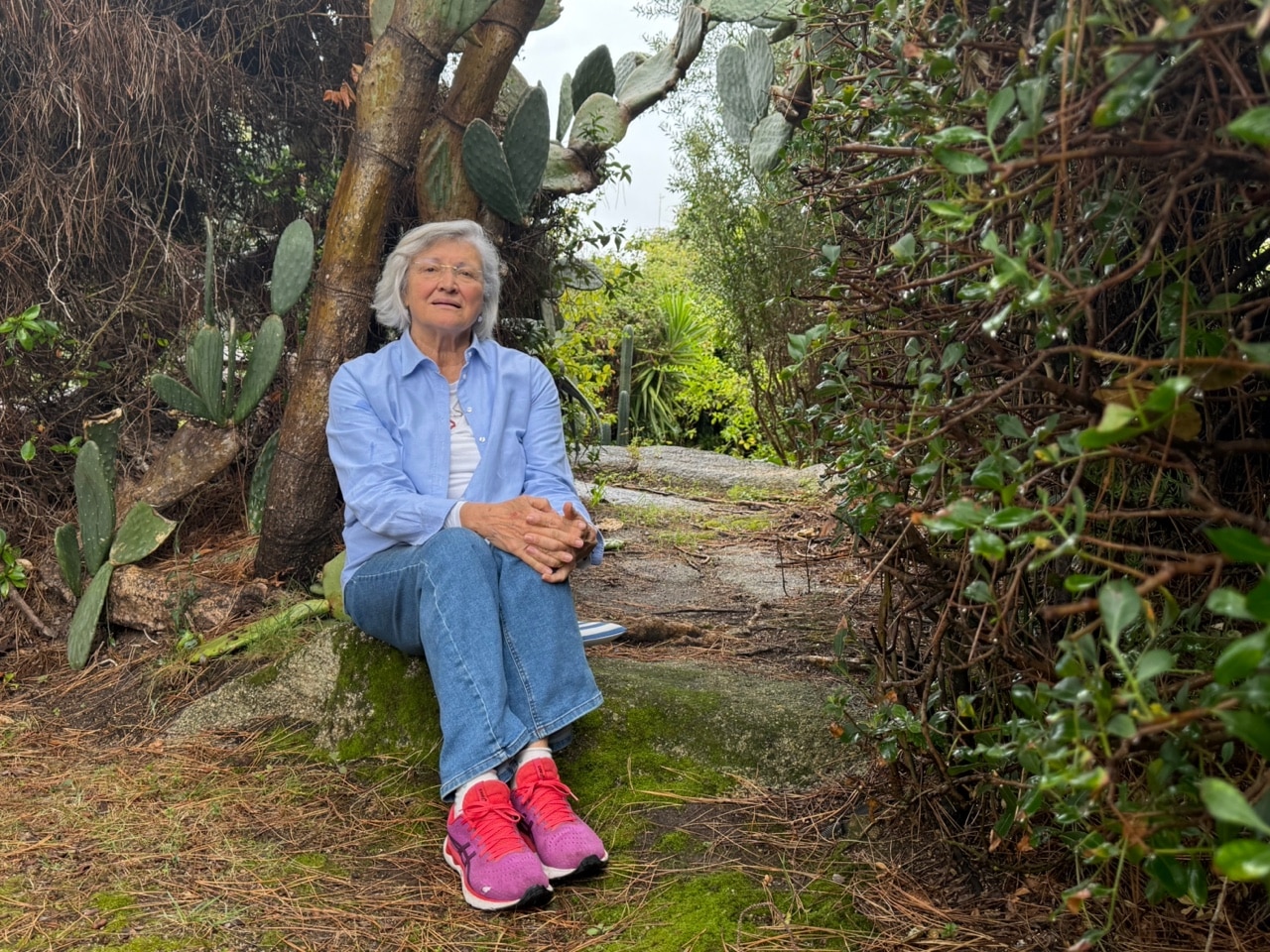AnnaRita Zalaffi: The Engineer at the Heart of Alberto Ponis’ Work
In April, Alex Pillen interviewed AnnaRita Zalaffi over the course of a day at her home in Palau, Sardinia. This text, which focuses on AnnaRita’s early life and her creative collaboration with her husband and professional partner Alberto Ponis, is published to coincide with the exhibition ‘The Crystal and the Flame: Studio Ponis in Sardinia’ at the Drawing Matter archive (21–22 June 2025), and a conversation between AnnaRita Zalaffi, Alex Pillen, Irina Davidovici, and Jonathan Sergison taking place on (Friday 20 June 2025).
AnnaRita Zalaffi (1947–), partner and wife of the architect Alberto Ponis (1933–2024), seldom talks about herself. Sketching a portrait of her personality and her professional role in Studio Ponis is not an easy assignment. Conversations tend to be filled with details about projects, clients, and, above all, her husband. I gave her carte blanche to bring to the foreground anything about herself she deemed necessary. This is how she began to introduce herself: ‘What I really want to say, until I was thirty, I didn’t know Alberto, so until I was thirty, I lived my life. Not now. Now I always talk about him.’ I interviewed her about her life. She begins by taking us back seventy years or so to her early years on La Maddalena, an island located in the Strait of Bonifacio between Sardinia and Corsica known for its wind-swept, rugged terrain.
AnnaRita was abandoned by her mother when she was four months old. Her father left too. Until the age of seven, she was raised by her Sardinian grandmother, Carmela Favale (1897–1985). Her mother was not maternal, and didn’t want her children at first; when she visited for Christmas, she was addressed as ‘auntie’ by AnnaRita and her cousins. When AnnaRita went out to play, her grandmother would tell her to bring her helichrysum, a fragrant plant from the Sardinian shrubland. Those were the first times she had a real contact with nature, learning the names of plants, bringing them home to her grandmother. She learnt to appreciate natural elements, the vegetation and rocks of the Sardinian coastline straight away. It is as if there was a missing generation and wisdom was passed on from a grandmother to a young child. Sardinian women are often compared to granite, because of their true grit and strength.
Her grandfather, Salvatore Chiaese (1881–1963), was also an influential figure for AnnaRita. He was a painter from Naples who had studied at the Academy in Rome. He worked as a calligraphy expert at the court in Tempio and had served as an officer in the Sassari Brigade during the First World War. During the Second World War the island of La Maddalena became a military fortress. Civilians were given twenty-four hours to leave the island. AnnaRita’s grandfather was sent into confinement by Mussolini and the fascists of La Maddalena but escaped.

At the age of seven, AnnaRita moved in with her mother and stepfather and went to school in Rome; she was a fiercely independent child with a rock-like streak embedded into her personality. It was her teachers in Rome who accompanied AnnaRita on her academic journey. They took her to see the museums, the gardens, and introduced her to the writers Grazia Deledda, Silvio Pellico, and Edmondo de Amicis. An inspired teacher arranged school trips to the Ponte Duca d’Aosta bridge and the nearby Roman inscriptions, something that has stayed with her to this day. Post-war children had to be born strong and educated well. Her school (Scuola Elementare Ferrante Aporti) was well-known for teaching children drama, dance, ballet, singing, and Latin. She went to acting school and took part in the first RAI television programmes for children, once dressed as a tree with cherry blossoms—she still has a part of the costume today. Over four months during summers, she lived with her grandparents in Sardinia. There, her grandfather taught her to draw, to paint, to use watercolours, to do maths. He passed on his love for the gardens of Rome, for the Villa Borghese, and taught her to appreciate museums at a young age. He passed away when she was fifteen.
In high school, AnnaRita excelled and then enrolled for an engineering degree at Sapienza University of Rome, one of three girls amongst over a thousand boys. Quite a few of the old professors did not treat women well, and graduating as a female engineer and taking the state exam to be admitted to the profession was no mean feat. Her time at university was also coloured by riots, police violence, and attacks by fascist agitators.
In her twenties, AnnaRita developed a successful career in Rome as an engineer, working for Sotecni designing bridges and train stations. She worked with Riccardo Morandi on contracts in Saudi Arabia, Iraq, and Iran. As a woman, she was not allowed to visit the construction sites or see a finished bridge that she designed. After her first marriage ended when she was 28, she began to work on her own, and took on assignments while visiting her family in Sardinia. There were no engineers on the island of La Maddalena and from the studio in Rome she began to design the extension of the cemetery of La Maddalena, a tennis club, and a high school.
These were those first thirty years of her life before she met Alberto Ponis. They were soon married and decided to have two children, Martha and Mario. In her words, ‘we did everything together.’ In the beginning she took her projects in Sardinia back to the studio in Rome to work on them. Later, they set up a studio in Sardinia and Alberto’s parents’ house in Genoa. AnnaRita managed the salaries and brought in architects from her workplace in Rome when deadlines were tight. Before that Alberto had only worked with surveyors, but soon they expanded the studio. They got the studio through the economic crisis of the eighties, visited the construction sites together as engineer and architect, and socialised with clients as a couple. Standing firm, next to one another on site, there was an unspoken bond between them when faced with the occasional pettiness of clients. But all along AnnaRita wanted to return to Rome, to continue her work as an engineer, designing bridges, because that was a job she was so passionate about. The nostalgia for this alternative career was strong, and still is, especially when she reads architectural historian and architect Gabriele Neri’s work on bridges built by Pier Luigi Nervi. Pure nostalgia for what never was.
In Genoa, Alberto’s mother, Magda Teresa Pascocci Ponis (1904–1989), helped with the children, as did numerous babysitters, so AnnaRita could attend business meetings. She was a most exceptional and intelligent mother-in-law, a role model for AnnaRita. AnnaRita commuted with her children between Genoa and Rome, where the family also had a house, and where Alberto’s brother Aldo Ponis, an urban planner, had a studio.
More so than Alberto or Aldo, AnnaRita built bridges with the past of the Ponis family, her sensitivity for the people and objects of yesteryear perhaps cultivated by being raised by her grandparents. Alberto and Aldo’s interest in the legacy of their father was limited. Mario Alberto Ponis (1893–1970) founded the Manifattura Italiana Tappeti Artistici (MITA) (Italian Artistic Carpet Manufactory) in Genoa in 1926. AnnaRita took on the responsibility for the MITA archive. When her mother-in-law passed away in 1989, she discovered a drawer full of greeting cards from the fifties and sixties. She was the one who decided to keep them, preserving each card carefully in a folder. The cards are a treasure trove of drawings and unbridled creativity by architects and designers such as Giò Ponti, Gustavo F. Pulitzer, Giò Pomodoro, Arnaldo Pomodoro, Luigi Carlo Daneri, Bruno Munari, Emanuele Luzzati, Enrico Paulucci, Emilio Scanavino, and others. She decided to open the folder for the first time since the 1980s on the occasion of this interview. In her hands she holds a slice of the history of Italian architecture and design, seen through the lens of personal drawings, playful New Year’s greetings: a private window into the soul of a generation of postwar designers.

As AnnaRita and Alberto were working together they always asked each other’s opinion before coming to a decision. If one of them said ‘no’, the other agreed, no questions asked. That was their modus operandi as they shared childcare and a studio. Many of the dwellings we recognise as central to Alberto Ponis’ oeuvre are intricately woven into the Sardinian landscape, with rocks protruding into their interior; by his side was the engineer AnnaRita Zalaffi, a granite-like presence in the centre of his life and work.
How can I depict that creative collaboration between AnnaRita Zalaffi and Alberto Ponis in a nutshell? I render this in her words:
‘Only recently did I understand that my role was important for him, like the role of all important wives in the career of a husband. But I maintained my independence, my freedom of mind that I have always had, all my life, since I was a child, living with my grandparents. The first years are the most important, they determine your whole life, your character.’
AnnaRita’s beginnings on the island of La Maddalena of the coast of Sardinia percolated into the work of Alberto Ponis as an independent form of practice and perennial dialogue. Colleagues and friends may wish to know where Alberto Ponis is now: in the urn on the bedside table, so she can speak to him, still.

Alex Pillen is an Associate Professor in Anthropology at University College London. Currently she is studying for an MA in Contemporary Art Practice at the Royal College of Art.
